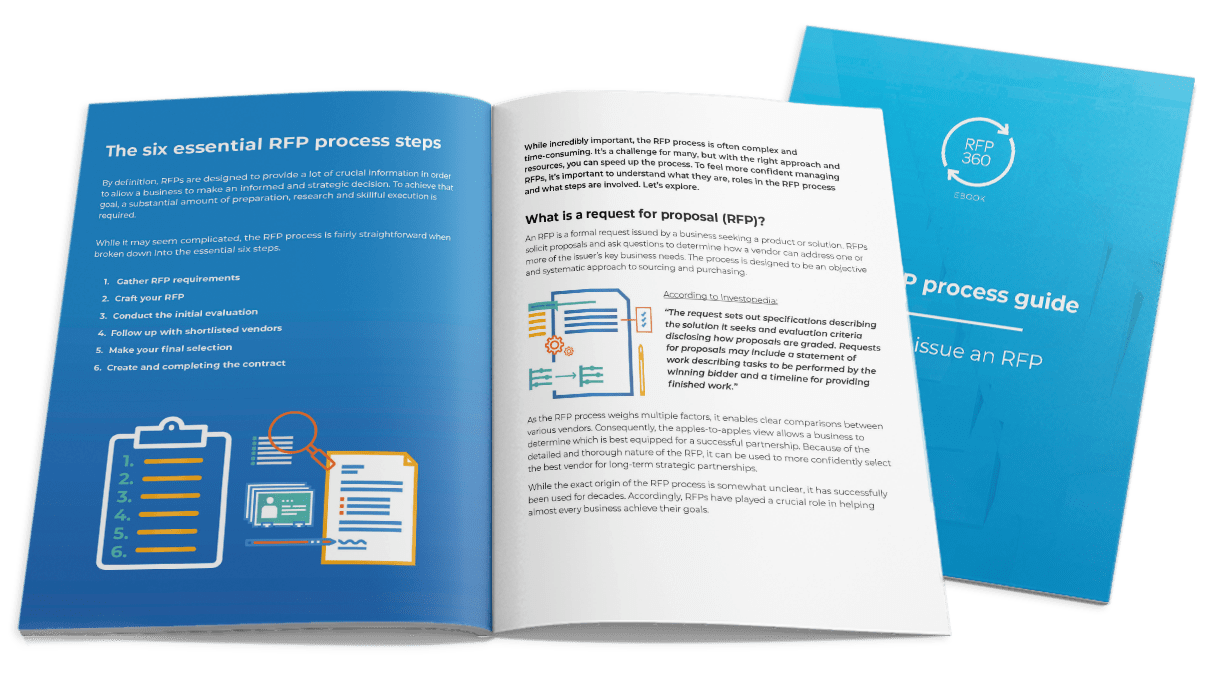Supplier diversity isn’t a trend — it’s a fundamental part of a successful procurement strategy. Indeed, supplier diversity has been a part of procurement for decades with roots in the civil rights movement dating back to the 1960s. Unfortunately, while diversity initiatives are decades old, wide-spread progress has been slow until recently.
Over the past few years, businesses have changed the way they approach vendor selection. As customers demand increases for supplier diversity and transparency, the process evolves. Not only does the shift toward inclusion satisfy customers, it also delivers long-term benefits to businesses. So, when it comes to supplier diversity, is your procurement and sourcing team leading, just going through the motions or being left behind?
This blog will explore the value and importance of supplier diversity. First, we’ll define supplier diversity and discuss the benefits. Next, we’ll walk through an overview of how to establish a supplier diversity program in your business. Then, we’ll offer tips to ensure your program is as effective as possible. And finally, we’ll share helpful supplier diversity program examples from well known organizations as well as resources for further research.
- Supplier diversity basics and benefits
- Basic steps for starting a supplier diversity program
- Vendor diversity best practices
- Best supplier diversity program examples
- Resources for additional exploration
Supplier diversity basics and benefits
What is supplier diversity?
Supplier diversity, also called vendor diversity or inclusive procurement, is the practice of sourcing products and services from organizations owned and operated by members of historically underserved or underrepresented populations.
Generally, minority-owned, women-owned, veteran-owned and LGBTQ-owned businesses are considered diverse suppliers. In addition, some organizations also include small businesses and businesses owned by persons with disabilities in their vendor diversity programs.
People want to work with and buy from others that share the same values. For many organizations and consumers, that means identifying companies that focus on social responsibility in all aspects of business, including procurement and sourcing. So, including vendors that haven’t historically been granted equal opportunities is crucial.
Put simply, it’s the right thing to do … it also happens to be the smart thing to do.
The benefits of embracing supplier diversity
Beyond the reputational and moral importance of inclusive procurement, there are plenty of other reasons to embrace the practice.
Increase profit
One barrier that businesses often identify as preventative to selecting more diverse suppliers is increased cost. However, research shows the benefits outweigh the cost. Indeed, a 2015 study by The Hackett Group indicates that for every $1 million in supplier diversity procurement costs, an average of $3.6 million is added to the bottom line.
Encourage healthy competition
When large, traditional organizations only compete against one another, pricing is often well established. However, when smaller organizations are intentionally included in sourcing processes, it shakes things up. Often, this inspires more competitive pricing and customized proposals.

Strengthen customer relationships
In addition to satisfying current customers, working with more diverse suppliers enables businesses to expand their reach. These suppliers enable the business to better understand and connect with additional customer demographics.
Inspire innovation
Innovation thrives at diverse organizations because they are generally smaller and able to be more experimental, responsive and agile. In fact, a study from Boston Consulting Group concluded that companies led by diverse teams have 19 percent higher revenue thanks to innovation.
Basic steps for starting a supplier diversity program
1. Build a business case
Executive buy-in is crucial to the long-term success of any diversity initiative. If your business has company-wide diversity, equity and inclusion initiatives, expanding to include a supplier program is a natural next step. So, as you develop your business case, connect your strategy with the company’s larger diversity and growth goals using diversity research and data (see our additional resources below).
2. Define your goals
There are many ways to measure the success of a inclusive procurement program. Before you kick off your initiative, it’s important to decide how you’ll track progress. To start, you may want to keep it simple and select a single metric. However, as your program matures, you may find more complex measurements more helpful.
- Number of diverse vendors included in RFPs and sourcing projects
- Diversity spend as a percent of total managed spend
- Total number of contracts awarded to diverse vendors
- First and second tier total spend with diverse suppliers
- Overall economic impact for diverse suppliers
- Total revenue impact of including new diverse suppliers
3. Incorporate diversity into your existing sourcing process
Now, you put it all into action. To start, it’s important to formalize your policy. Create a guiding document that defines the background, goals and strategy behind your plan. Next, carefully examine your sourcing and RFP processes.
What steps can be changed to intentionally include more diverse vendors? For example, you could specifically seek out diverse vendors, incorporate diversity, equity and inclusion (DEI) questions in your requests for proposals (RFPs), provide your diversity policy with RFPs and include supplier diversity evaluation criteria. As you make changes to your process, be sure to over communicate your plan to internal and external stakeholders.
To explore the RFP process in more detail, download the RFP process guide ebook.

4. Manage risk
Hesitation to work with diverse or small vendors often stems from assumptions about the experience, reliability or capabilities of diverse or small vendors. Certainly, the proposals you receive from vendors should put your mind at ease regarding most of these topics. However, you should still issue a vendor risk assessment. This will enable you to proactively identify and mitigate any potential risks while securing the vendor relationship.
5. Engage, track and evaluate
Measuring return on investment (ROI) is commonplace for procurement professionals — and the results of your diversity efforts should be no exception. In addition, it’s important to engage in regular vendor performance evaluations to seek feedback from suppliers. Indeed, they can provide a new perspective on how to further enhance your diversity program.
Vendor diversity best practices
Engage with current suppliers
Ultimately, the goal of supplier diversity programs is wide-spread change. So, while you may be happy with your current suppliers, it’s important to share your intention to engage with more diverse suppliers. Communicating your expectations and plans can inspire change and transparency throughout your supply chain. Additionally, you may consider adding DEI questions to your standard vendor performance evaluations to enable and encourage diversity among tier two suppliers.
Enable proactive vendor participation
Often, by the time a project lands in the procurement department, the need is imminent. Quickly finding diverse suppliers is a challenge. Consequently, planning ahead is key. Many organizations successfully source diverse suppliers using vendor profiles.
These profiles are similar to a request for information (RFI) that gathers general information from vendors. However, in this case, businesses proactively submit their supplier diversity certification as well. Then, when a procurement project arises, the vendor’s information is readily available and inclusion in the sourcing event is quick and easy.
Include supplier diversity questions in your RFP
When approaching a new procurement project, it’s important to incorporate supplier diversity elements into your RFP process. Indeed, there are a handful of key questions you should ask every vendor.
- Does your organization have an internal diversity, equity, and inclusion committee or team? If so, when was it established and what is its mandate?
- Do your employees participate in diversity, equity and inclusion training sessions?
- Does your organization have a formal diversity and inclusion policy or initiative? If so, please provide the documentation.
- Do you have a vendor diversity program of your own? Does it cover tier one and tier two suppliers?
- Please provide any relevant supplier diversity certifications.
Best supplier diversity program examples
When it comes to gathering inspiration for your supplier diversity program, you don’t have to look far. A quick search reveals the supplier diversity programs from some of the largest organizations in the world. While your business may not manage quite as much spend, there’s still plenty to learn from these different diversity, equity and inclusion approaches.
For instance, many of these businesses use vendor profiles or hosted forms to enable diverse vendors to proactively submit their information for future procurement projects.
Johnson & Johnson supplier diversity program
Established in 1998, J&J’s formal Office of Supplier Diversity manages an active, ongoing outreach program. The company requires vendors to register with CVM Solutions to verify their diversity certifications and facilitate connections with procurement opportunities.
Walmart supplier inclusion program
As the world’s largest retailer, Walmart’s diversity program strives to reflect the diversity of their customers and employees. In addition to enabling suppliers to submit their information online, Walmart’s diversity website offers success stories as well as a link to specifically shop diverse suppliers.

Cigna supplier diversity program
The Cigna website provides an overview of their diversity program. In addition, it includes a helpful list of the diverse-owned business classifications they’re focused on expanding. Part of Cigna’s plan is their mentor/protege program that pairs diverse suppliers with executives for an 18-month strategic partnership designed to develop and grow their business.
Mastercard global diversity and inclusion program
Uniquely, Mastercard’s supplier diversity program factors in both tier one and tier two suppliers. In addition to taking inclusion one step further, the company explains how their strategy aligns with their larger company-wide diversity and inclusion goals.
Resources for additional exploration
Change in procurement and sourcing is constant. Likewise, approaches to inclusive procurement continue to evolve and expand as well. Fortunately, the procurement community is active and excited to discuss, advise and engage. You’ll find many resources available to deepen your knowledge, but we’ve gathered a few resources here to help you get started.
Podcast episodes about supplier diversity
MIT Supply Chain Frontiers – Supplier Diversity, Equity, and Inclusion – Challenges and Opportunities
This podcast from MIT features two guest speakers, Nalini Bates from Procter and Gamble and Kris Oswold of UPS. In the discussion, they bring two unique perspectives to a recap of a recent roundtable discussion of vendor diversity. With a focus on economic impact, the podcast focuses on overcoming challenges to deliver results.
Efficio Consulting – Supplier Diversity: Of course it matters, but where to begin?
Explore inclusive procurement from a global perspective in this podcast. This interview features advice and insight from Victoria Mallinckrodt, the Procurement Development Lead at World Economic Forum. You’ll hear an overview of the many benefits of adopting a supplier diversity program.
“From the business side of things there’s a number of benefits. Research has found shows that including diverse suppliers fosters innovation and competitiveness. Because these suppliers bring new ideas and different approaches, they can give you insights into the communities they come from.” – Victoria Mallinckrodt
Art of Procurement – Making the Case: The Business of Supplier Diversity w/ Jamie Crump
Jamie Crump joins Art of Procurement’s host, Phil Ideson, to discuss vendor diversity in this podcast. As president of the Richwell Group, Jamie offers insight about what she’s learned working with businesses seeking to enhance their supplier diversity programs.
Supplier diversity research and studies
The Hackett Group – Worldwide Calls for Social Reform and Racial Equality Drive Dramatic Plans to Expand Supplier Diversity Programs
Looking for numbers to support your business case? This study from Hackett Group offers insights about vendor diversity trends. In addition, the report offers specific areas for organizations to focus on to improve and encourage inclusion.
CAPS Research – Supplier Diversity Program Performance Benchmarking Reports
The Center for Advanced Procurement Strategy (CAPS) regularly surveys procurement professionals in Fortune 600 companies. As a part of this research, they explore how much of the organization’s managed spend is directed to diverse suppliers in several categories. The latest report was published in 2020 and is available to members. However, the report from 2016 includes many insights and is available with a free registration.
Gartner — 2021 Supply Chain Diversity, Equity & Inclusion Survey
The key findings in this report are telling — supplier diversity initiatives are gaining ground and here to stay. Large organizations are leading the pack, but the research provides recommendations for any business looking to improve.
Supplier Diversity Organizations and Associations
Identifying diverse suppliers is one of the challenges faced by many organizations. Luckily, there are many local, regional and national organizations and associations focused on various aspects of diversity.
- The Council for Supplier Diversity
- Global Supplier Diversity Alliance
- National Minority Supplier Diversity Council (NMSDC)
- Women’s Business Enterprise National Council (WBENC)
- US Hispanic Chamber of Commerce (USHCC)
- National Gay & Lesbian Chamber of Commerce (NGLCC)
- US Pan Asian Chamber of Commerce (USPAACC)
- National Veteran Owned Business Association (NaVOBA)
- Disability:IN
In addition to serving as a resource for finding suppliers, many of these organizations also provide diversity certifications. For local procurement projects, consider connecting with your chamber of commerce to explore their diversity initiatives.
Making supplier diversity meaningful
Your supplier diversity program should be about more than just checking off bureaucratic boxes. It should embody a genuine desire to seek out partners with different perspectives, ideas and approaches. In doing so, not only does your organization benefit, but it also makes a meaningful and lasting positive impact in underserved communities. Truly, it’s a win-win.



